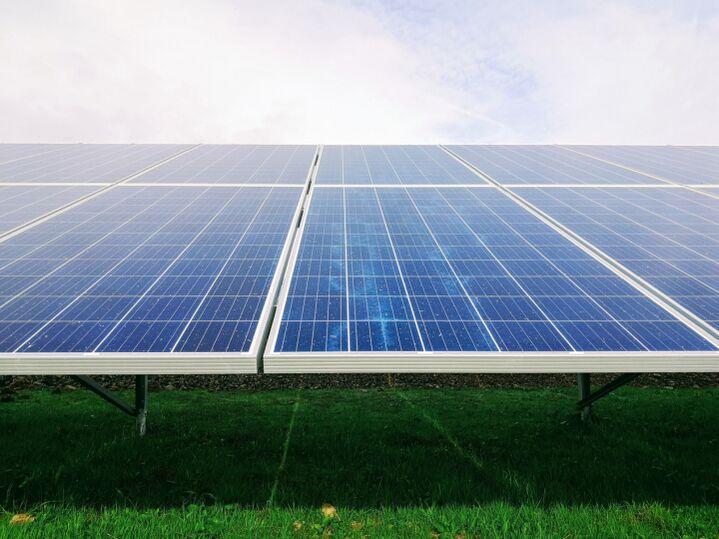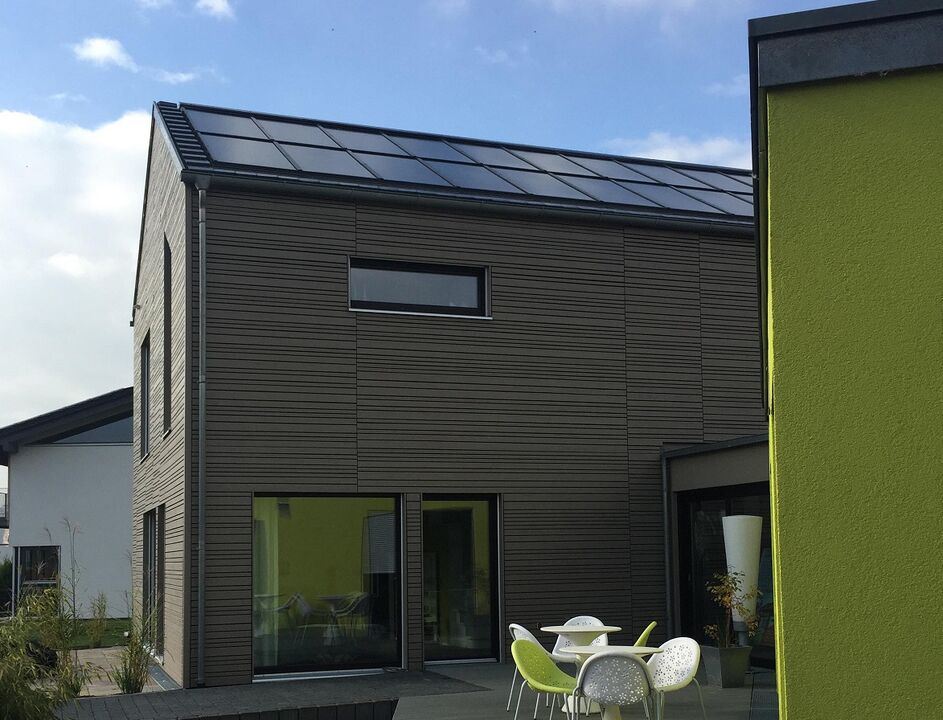
- direct sunlight through the windows;
- heat generated by household appliances and even residents and pets;
- Of course, there are also devices whose main function is to provide solar energy to the house - solar panels (batteries), which we will discuss.

How solar panels work and how they interact with other home systems
- The operation of solar panels is based on converting thermal radiation affecting silicon wafers into electrical energy;
- Solar panels allow you to use solar energy to operate household appliances, ventilation systems and (part of) heating;
- If the solar panel capacity is higher than the household needs, then the remaining energy can be used in a system that stores and converts electricity.
- If power demand exceeds the capacity of the panels, the missing portion can be sourced from the network (option for networked solar stations) or liquid fuel generators (autonomous solar stations).
Types of solar modules
- In the form of silicon plates (the most common, highest performing and most expensive), efficiency - up to 22%; they are divided into three subtypes: monocrystalline (the most reliable), polycrystalline and amorphous; pure silicon is used in the first two positions, The third position uses silicon hydrogen, which is applied to the substrate;
- Thin Films - Made using cadmium telluride, copper indium selenide and polymers. They are less expensive, but also have lower performance (efficiency 5-14%), so in order to make the battery suitable for the "appetite" of the household, the area that receives the radiation needs to be increased.
The consumption attributes of solar panels are described by the following characteristics:
- strength.The larger the solar panel area, the greater its power; to generate 1 kWh of electricity per day in summer, approximately 1. 5 square meters of solar panels are needed. The most efficient power occurs when light falls vertically on the cell surface, but this cannot always be ensured, so changing the panel's performance during the day is a natural process. To ensure that the required energy is obtained in spring and autumn, about 30% must be replenished in this area;
- efficiencyThe (efficiency) of modern solar panels – averages around 15-17%;
- Battery life and charge loss over time. Manufacturers typically offer a 25-year guarantee on the operation of solar panels, promising that the power will be reduced by no more than 20% of the original value during this period (for some manufacturers, the service life is between 10-25 years) and that the power will be reduced by no more than10%). Crystal components are the most durable, with an estimated service life of 30 years. The world's first solar cells have been operating for more than 60 years. The decrease in the yield of the solar module itself is mainly due to the gradual breakdown of the sealing film and the clouding of the layer between the glass and the solar cell - moisture, UV radiation and temperature changes;
- Battery included, ensuring the operation of the panel at night, which is a good supplement to the function of the solar generator. The service life of the battery is usually shorter than the solar module itself, averaging 4-10 years;
- Availability of additional nodes– Such as voltage regulators, battery charge controllers, inverters (domestic DC to AC 220 V converter) making the operation and integration of the device into a "smart home" system easier;
- battery cost– Directly depends on its area: the more powerful the device, the more expensive it will be. Additionally, foreign-made panels are still cheaper than domestic ones, since solar panels are more popular there than in our country. But when comparing the prices of our and imported equipment, it is first necessary to compare the operating efficiency of solar panels - here domestic manufacturers achieve good efficiency indicators - up to 20%.
Photovoltaic cell selection and use
- Plan the daily energy consumption of equipment powered by solar energy (indoor lighting, home appliances, security and automation equipment, etc. ). It should be taken into account that charging and discharging the battery also consumes energy (about 20%), as well as losses in additional equipment (for example, inverters have an average loss of 15-20%);
- The relationship between the required dimensions of the working panels and the corresponding roof area and its geometry;
- Able to remove dirt, snow and other factors that affect the operation of the photoelectric converter on the battery working surface.
Key points in the operation of solar panels
- Avoid physical damage to the panel (scratches and damage to the integrity of the protective film may lead to contact shorting and/or corrosion);
- In harsh climate conditions, it is recommended that solar power stations be equipped with wind-shielding structures;
- Regular inspection, cleaning and maintenance are mandatory.
Solar Panel Cost and Return on Investment
- Summer - 5 kWh/day (May to August);
- Spring and Autumn - 3-4 kWh/day (March-April, September-October);
- Winter - 1 kWh/day.
Tariffs have not been reduced
- Ensure that the south facade is not obscured;
- Roof pitch angle and panel working surface selection;
- The correct direction of the house towards the cardinal point;
- Prevent solar panel working area from being blocked, leaves clogging, etc.

























